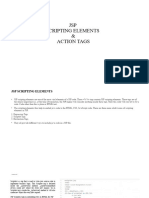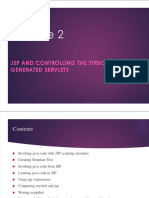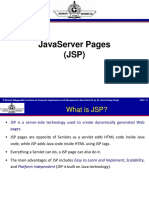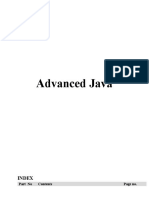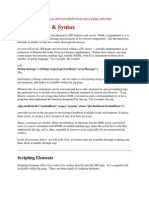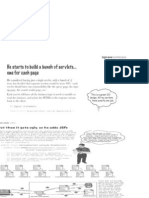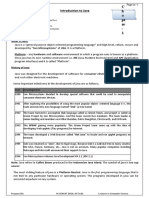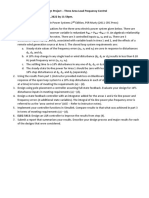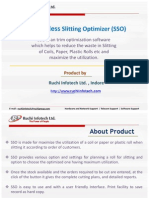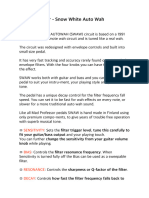0% found this document useful (0 votes)
21 views41 pagesDR Chen Scripting Components
The document discusses JSP scripting elements, directives, and standard actions. It explains that JSP pages can include static template text as well as dynamic content through scripting elements, directives, standard actions, and custom tags. Scripting elements include declarations, scriptlets, and expressions. Directives provide information to the JSP container. Standard actions are used to access Java objects like JavaBeans components. The document demonstrates how to create and use a JavaBeans component through JSP tags and share data between JSP pages and servlets.
Uploaded by
akulaaksonenCopyright
© © All Rights Reserved
We take content rights seriously. If you suspect this is your content, claim it here.
Available Formats
Download as PDF, TXT or read online on Scribd
0% found this document useful (0 votes)
21 views41 pagesDR Chen Scripting Components
The document discusses JSP scripting elements, directives, and standard actions. It explains that JSP pages can include static template text as well as dynamic content through scripting elements, directives, standard actions, and custom tags. Scripting elements include declarations, scriptlets, and expressions. Directives provide information to the JSP container. Standard actions are used to access Java objects like JavaBeans components. The document demonstrates how to create and use a JavaBeans component through JSP tags and share data between JSP pages and servlets.
Uploaded by
akulaaksonenCopyright
© © All Rights Reserved
We take content rights seriously. If you suspect this is your content, claim it here.
Available Formats
Download as PDF, TXT or read online on Scribd
/ 41
